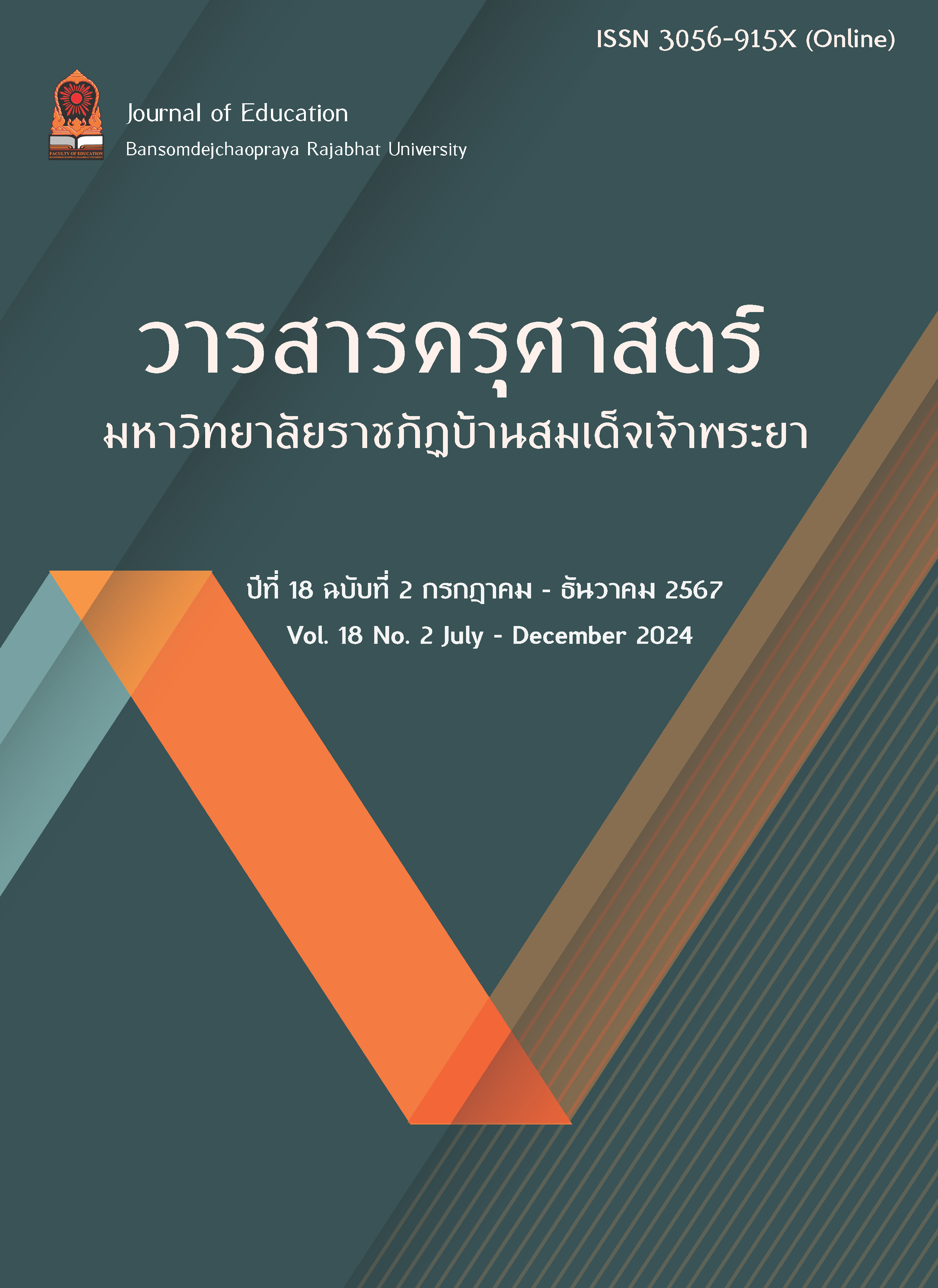Guidelines for Assessment and Evaluation of Learning Management by Teachers Using Design Thinking for Student Development
Keywords:
Measurement and Evaluation of Learners, Learning Management, Design ThinkingAbstract
Over the past decade, design thinking has been widely utilized across several areas such as business, trade, industry, and education. The design thinking process involves five steps: 1) Understanding the problem, including the perspectives of all stakeholders, identifying the target group, and determining the most suitable solution; 2) Clearly defining and framing the problem; 3) Brainstorming innovative ideas; 4) Developing a prototype or model, and 5) Testing the prototype to address the target group's needs. In the educational context, there is considerable research on teachers utilizing the design thinking process to enhance students' abilities. However, the number of articles focused on the components of learning management and assessment and evaluation reflecting the results of the processes, contexts, and factors for design thinking as well as measuring and evaluating learning management through design thinking in the Thai educational context still needs to be increased. This article addresses this gap by introducing the principles of formative and summative assessment tailored to design thinking, which are suitable for evaluating students’ competencies in high-level and complex contexts. Therefore, the development of effective assessment and evaluation methods is crucial. This article presents a framework for assessment and evaluation, instruments for both self-assessment and teacher assessment, and analytic scoring for assessing design thinking. Examples of these instruments are also provided to illustrate how to apply them as the design thinking assessment framework to maximize learners’ potential in learning continuously.
Downloads
References
Adams, C. and Nash, J. (2016). Exploring Design Thinking Practices in Evaluation. Journal of Multi Disciplinary Evaluation, 12(26), 12-17.
Baxter, G. and Laird, N. (2004). Grade Expectation: Assessing Design Thinking. The Development of an Online Evaluation System. International Engineering and Product Design Education Conference (1-8). The Netherlands.
Dikgomo, K. (2023). Development of An Assessment Instrument for Student Engagement in Design Thinking Projects for Health Innovation. South African Journal of Higher Education, 37(4), 82-101.
Innovationtraining. (2023). Design Thinking Self Sssessment. Retrieved from https://www.innovationtraining.org/design-thinking-self-assessment/
James, C. (2018). Evaluating and Assessing: Design Thinking—Potential Areas of Assessment (example). In D!Lab Guide to Design Thinking and Imagination. Center for Transformative Teaching and Learning. Retrieved from https://drive.google.com/file/d/1H-Jr5UdWctTaawkSV7SF08egKK2tK5T/view?usp=sharing
James, C. (2018). Assessment, Evaluation, and the Feedback of Design Thinking and Creativity. In D!Lab Guide to Design Thinking and Imagination. Center for Transformative Teaching and Learning. Retrieved from https://microcredentials.digitalpromise.org/explore/assessment-evaluation-and-the-feedback-of-design-t
Downloads
Published
How to Cite
Issue
Section
License
Copyright (c) 2024 Faculty of Educaion Bansomdejchaopraya Rajabhat University

This work is licensed under a Creative Commons Attribution-NonCommercial-NoDerivatives 4.0 International License.
บทความที่ได้รับการตีพิมพ์เป็นลิขสิทธิ์ของคณะครุศาสตร์ มหาวิทยาลัยราชภัฏบ้านสมเด็จเจ้าพระยา
ข้อความที่ปรากฏในบทความแต่ละเรื่องในวารสารวิชาการเล่มนี้เป็นความคิดเห็นส่วนตัวของผู้เขียนแต่ละท่านไม่เกี่ยวข้องกับมหาวิทยาลัยราชภัฏบ้านสมเด็จเจ้าพระยา และคณาจารย์ท่านอื่นๆในมหาวิทยาลัยฯ แต่อย่างใด ความรับผิดชอบองค์ประกอบทั้งหมดของบทความแต่ละเรื่องเป็นของผู้เขียนแต่ละท่าน หากมีความผิดพลาดใดๆ ผู้เขียนแต่ละท่านจะรับผิดชอบบทความของตนเอง


